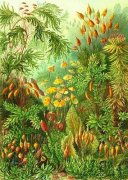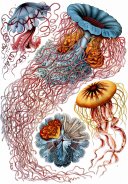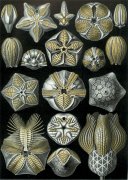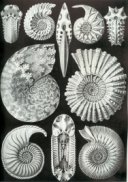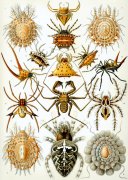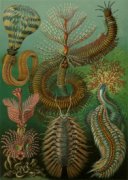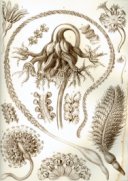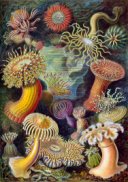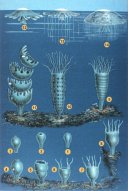Scientific Illustrations of Ernst Haeckel
Ernst Haeckel Artwork |
Also
see: |
| Ernst Haeckel (February 16, 1834 to 9 August 9 1919) was a German scientists, also variously described as a biologist, naturalist and artist. He was a prolific writer, authoring many books and monographs, and is particularly famous for his colorful scientific illustrations like those shown below. He discovered and scientifically described thousands of species and endeavored to map the phylogeny of all life forms (the tree of life) across all life forms. He is the originator of many terms in wide scientific use today, such as protista, ecology, phylum, phylogeny, and, amazingly, stem cell. Charles Darwin’s Origin of Species, while elegant prose, was highly technical and poorly illustrated. It is reasonable to say that Haeckel did much to popularize Darwin’s theories to the lay public. Arguably, his most famous scientific illustrations is Kunstformen der Natur ("Art Forms of Nature") published between 1899 and 1904, with some 100 prints of land and marine animals, many of which Haeckel himself had scientifically described. The artworks are amazingly colorful, and emphasize the diverse and inherent symmetries found in nature. In his Radiolaria report (1887), there were 140 plates of illustrations elucidating more than 4000 new species.
| ||||||||||||||||||||||||||||||||||||
Fossil
Museum Navigation:
Home Geological Time Paleobiology Geological History Tree of Life Fossil Sites Fossils Evolution Fossil Record Museum Fossils |

